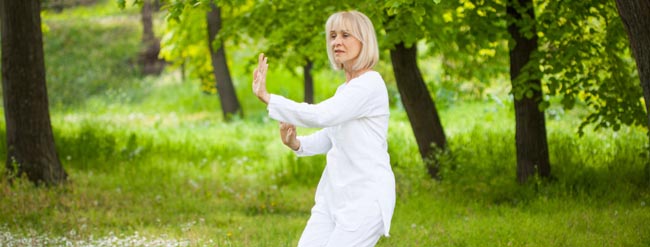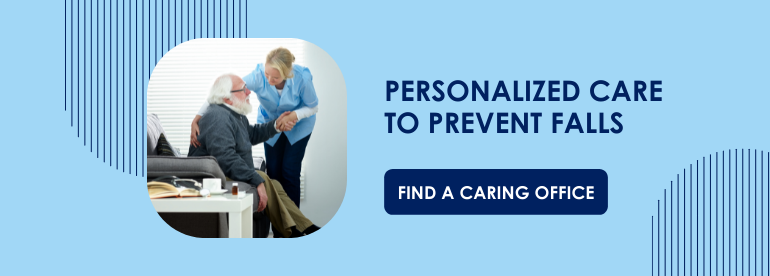AARP surveyed people who were 50 years of age and older about their preferred future living accommodations. Eighty-nine percent of those surveyed responded that they wanted to “remain in their home indefinitely as they age.” But in order to age in place, seniors must be able to safely get around their homes. For those aging adults who are hoping to stay in their homes as they age, getting regular exercise is essential. Here are a few specific fall prevention exercises that develop strength and balance.
Benefits of Exercise
Not only will exercise help strengthen muscles, it also helps with cognition, helping to stimulate the brain and possibly slowing the progress of dementia, which is important as Alzheimer's and other forms of dementia provide an additional risk factor for falling. However, all seniors can benefit from exercise as it:
-
Improves strength and balance
-
Improves physical fitness through strong muscles and flexible joints that allow greater independence
-
Keeps bones strong, reducing the risk of osteoporosis and breaks that occur because of falls
-
Helps the ability to dress and perform other daily activities that dementia patients often have difficulty doing
Fall Prevention Exercises
Chair Exercises
You don’t need to buy any fancy equipment to get a workout that will help develop the muscles and stability needed for fall prevention. All you need is a chair! Even better, there are many exercise videos that can be found online free of charge. Check out this hour-long routine and this shorter video that presents a stretch for fall prevention.
Elastic Band Exercises
Hip stability and strength are key aspects of having the overall mobility to avoid falls. So, it’s a great idea to find fall risk exercises that focus on the hips. As part of its fall prevention program, IDEA Health & Fitness Association provides a section with step-by-step instructions on how to use an elastic band to work your hips. In this part of the program, you’ll strengthen your hips through hip flexion, hip abduction, hip extension, and hip adduction exercises.
Weightlifting
Believe it or not, weightlifting is good for seniors. Weightlifting can help seniors with their balance and movement control. By strengthening muscle groups, seniors can maintain their independence and reduce their chance of falling.
Swimming
Jumping in the pool can be a great way to break up the monotony of land exercises. Even better, it’s an excellent way to focus on the areas of the body that contribute to fall prevention. Swimming reduces body fat, builds muscle strength, and increases “lean muscle stamina and endurance.” It is also a whole body workout, so all of your muscle groups will get some attention. And if swimming laps isn’t for you, the article advises that “water walking” is a great way to shake things up.
Balance Training
It makes sense that balance is an important part of fall prevention, but as we age, many changes get in the way of our ability to stay safely on our feet. For example, factors such as muscle loss, hearing loss, decreased agility, and so on, can make us a little wobbly. Additionally, if a senior falls once, they may experience decreased confidence in their abilities, creating more fear of falling. For some balance exercises, check out our infographic with detailed exercise moves for seniors.
Walk a Straight Line
One great way to improve your loved one's balance is to ask him or her to walk a straight line. You can use a piece of painter's tape to create a straight line on the floor; then, you can remove the tape when the exercise is over without any damage.
Walk While Reading a Piece of Paper
The exercise of learning how to walk while reading something that is written or typed on a piece of paper is helpful. Just make sure that there is someone around to keep an eye on your elderly loved one when he or she is performing this exercise. This can help your mom or dad get used to reading a shopping list while walking around the grocery store or glancing at the mail while walking back from the mailbox.
Step Over Something Soft
Provide your mom or dad with a small stuffed animal. Place it on the floor, and ask your mom or dad to carefully step over it, forward and backward. This can help your loved one gain balance and can prepare him or her to step over obstacles that might otherwise cause a fall.
Eye Tracking
Hold your thumb in front of you at arm's length and move left to right and then upward and downward while following with your head. This fall risk exercise may make you dizzy so have something to hold on to if it does.
Clock Reach
Hold on to a chair and lift a leg. Visualize a clock with 12 in front, 3 to your right, and 6 behind you. Now reach your arm and rotate to these three positions. Repeat with the other arm and leg.
Tai Chi
Tai Chi is an ancient Chinese form of exercise that "involves a series of movements performed in a slow, focused manner and accompanied by deep breathing." Tai Chi is a low impact exercise, making it especially appropriate for seniors. Tai Chi improves flexibility, balance, and muscle strength and has been shown to be effective in reducing the risk of falls. Many communities offer Tai Chi classes, where an instructor will teach specific positions and breathing techniques.
Yoga
Yoga originated over five thousand years ago as a means to heightened self-understanding. Yoga combines exercise, breathing, and meditation and is appropriate for seniors due to its non-strenuous nature. Yoga improves flexibility, strength, and balance. Classes are prevalent in most communities and some offer chair yoga specifically for seniors. Some classes also address fall prevention.
We hope these fall risk exercises can help aging loved ones stay safe at home. To learn more about the dangers of falls, refer to our Fall Prevention Fact Sheet!


